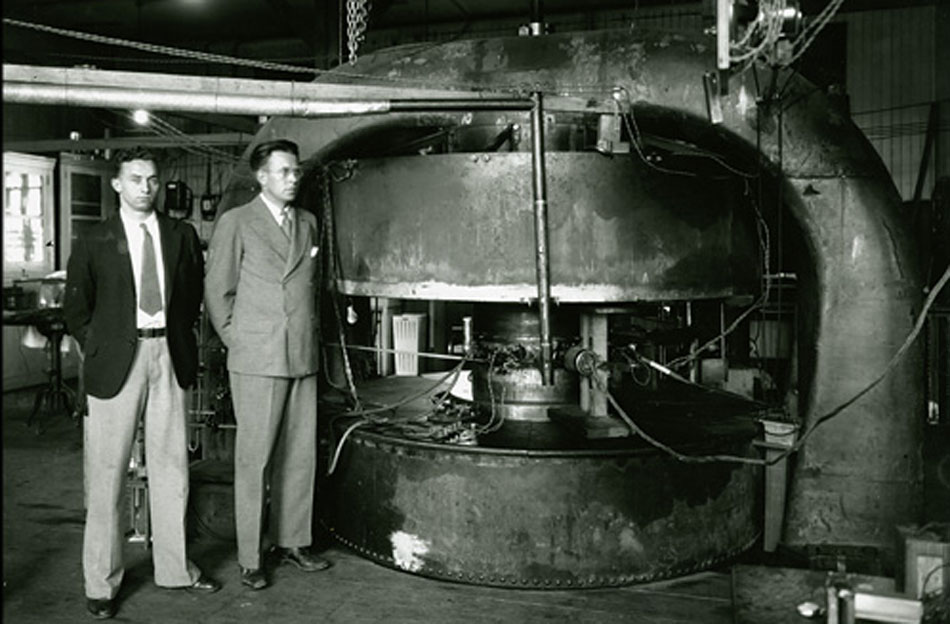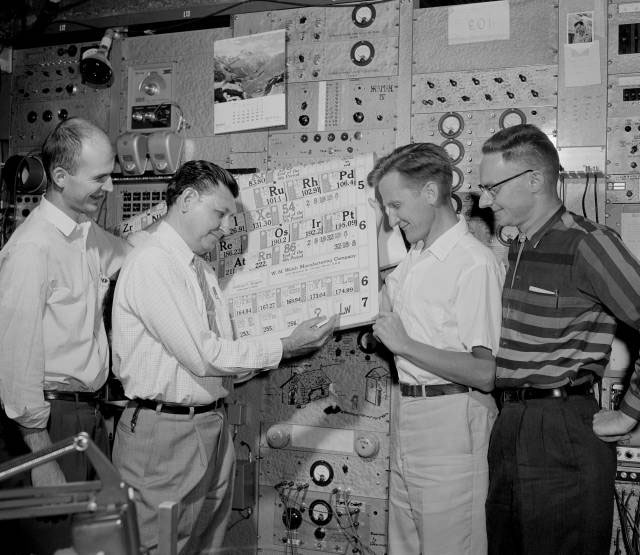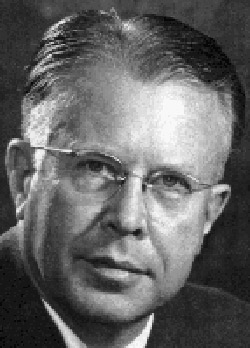Lawrence, Ernest Orlando (1901–1958)

Ernest Lawrence (right) and colleague beside the 27-in cyclotron, 1932. Courtesy: Lawrence Berkeley National Laboratory.

Albert Ghiorso updating the periodic table in April 1961, inscribing the symbol 'Lw' in the position for element 103, as codiscoverers Latimer, Sikkeland, and Larsh (left to right) look on.
Ernest Lawrence was an American physicist who in 1929 conceived and in 1931, with colleagues, built the first cyclotron at the University of California at Berkeley. Lawrence went on to develop larger cyclotrons, capable of operating at higher energies, and his work in this area earned him the 1939 Nobel Prize in Physics.
 |
In 1936, having recognized the potential use of nuclear isotopes in medicine, Ernest Lawrence persuaded his brother John to join the Berkeley Laboratory to develop this new field. In that same year, John treated a 28-year-old woman, suffering from leukemia, with phosphorus-32 that had been produced in Berkeley's 37-in cyclotron. He then went on to spend the rest of his career in nuclear medicine at Berkeley.
The element lawrencium was named after him, as was the Lawrence Berkeley Laboratory.
Lawrencium
Lawrencium (Lr) is a radioactive, metallic element that is a member of the actinide series and also a transuranic element. It was first made by A. Ghioro and coworkers in 1961 at the University of California at Berkeley by bombarding californium with boron nuclei; it is named after Ernest Lawrence. The element has been made in only trace amounts but has been identified chemically. Its most stable isotope is 256Lr (half-life 27 sec). Atomic number 103, relative atomic mass 262.


